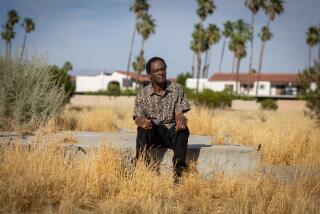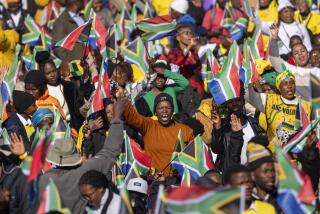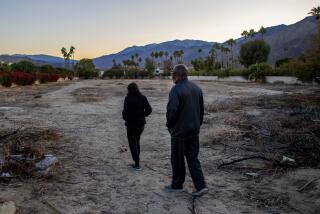Firm’s Plan to Rebuild South Africa Community Into Integrated District Snubbed
- Share via
CAPE TOWN, South Africa — On a prime location near the center of Cape Town is a wasteland of overgrown fields dotted with six churches and mosques--a conspicuous scar left by apartheid.
Now a major company, British Petroleum, has reopened the wound by offering to rebuild the razed District Six area into South Africa’s first legally integrated neighborhood.
During more than a century, District Six evolved into a dilapidated but vibrant multiracial, 250-acre community. In 1966 the South African government declared it a whites-only area. Within 15 years it demolished virtually every non-church building and moved more than 40,000 people of mixed race to faraway suburbs.
In mid-November, when British Petroleum offered to organize a multimillion-dollar redevelopment effort if the area were opened to all races, not only the government but also its opponents were unenthusiastic.
‘Open Wound’
“Until such time as all South Africans can live where they want, let District Six be a reminder of the pain that an ethnically based land policy can cause. Let it be an open wound,” said the Rev. Alan Brews, a Methodist minister whose church on the edge of the district lost much of its congregation to the evictions.
Even Cape Town’s City Council, dominated by members of the liberal Progressive Federal Party, has given the offer a lukewarm response, in part, council members say, because the oil company did not consult it in advance.
Clive Keegan, chairman of the council’s Planning Committee, described the plan as “an exercise in public relations.” He said it was unlikely that the National Party government would relax its Group Areas Act, the legislation that segregates neighborhoods.
“District Six has always been a terribly emotional place,” Keegan said in an interview. “To allow a foreign oil company to step in and redevelop it as a multiracial neighborhood would be more than the government’s pride could bear.”
Positive Example?
Keegan said the proposal, if implemented, might serve as a positive example for the rest of the country. But he added that the City Council would prefer that the Group Areas Act be scrapped entirely.
Similar views were expressed by Richard Rive, an English professor whose mixed-race family left its District Six home in 1965.
“There is no sense trying to right a wrong here symbolically when the wrong is still perpetrated elsewhere,” he said. “I’m not terribly excited about District Six becoming non-racial. I’m excited about South Africa becoming non-racial.”
British Petroleum, apparently realizing the sensitivity of its offer, has declined public comment on the matter since its announcement.
No Detailed Response
The government has made no detailed response, other than noting that current law prohibits multiracial neighborhoods.
The proposal has been welcomed by some moderates, such as the Rev. Allan Hendrickse, leader of Parliament’s mixed-race chamber. He said that British Petroleum had given President Pieter W. Botha “a golden opportunity” to demonstrate his sincerity about reform. It was Botha, then the community development minister, who issued the whites-only proclamation in 1966.
But Brews, a white whose congregation is largely mixed-race, called the redevelopment proposal “a ghastly capitalist public relations exercise.”
“People don’t want District Six to become an open area so Botha and his cohorts can go overseas and say, ‘See what we’ve done,’ ” Brews said. “The true story of District Six is still being written.
“There are people who psychologically died the day they were moved and have been physically dying ever since.”
More to Read
Sign up for Essential California
The most important California stories and recommendations in your inbox every morning.
You may occasionally receive promotional content from the Los Angeles Times.










